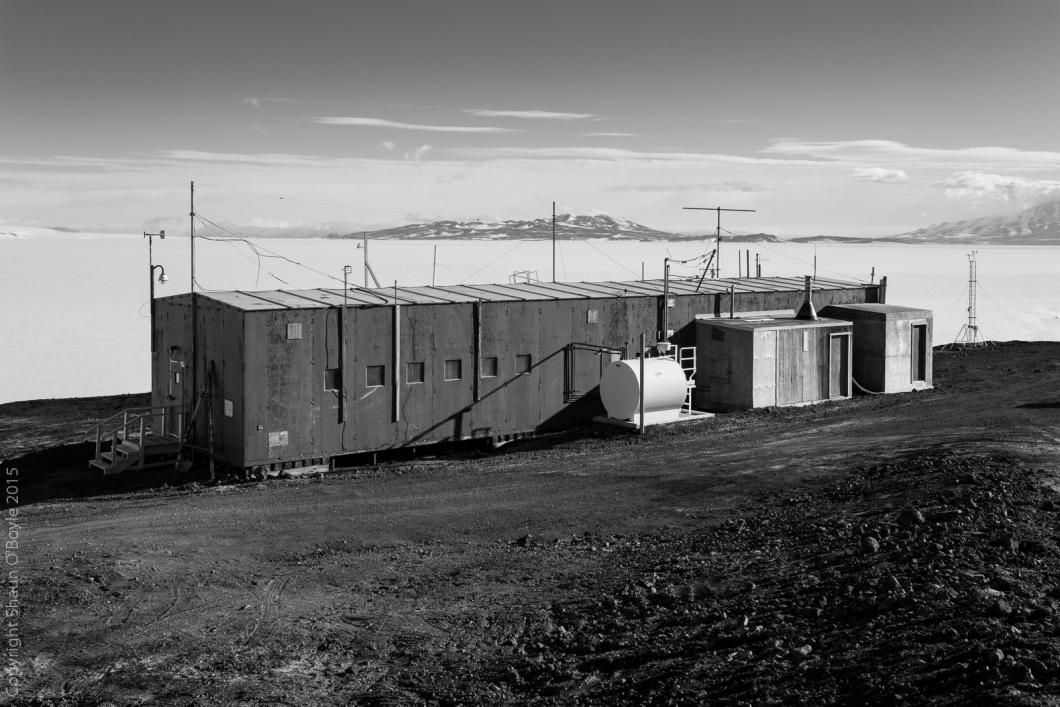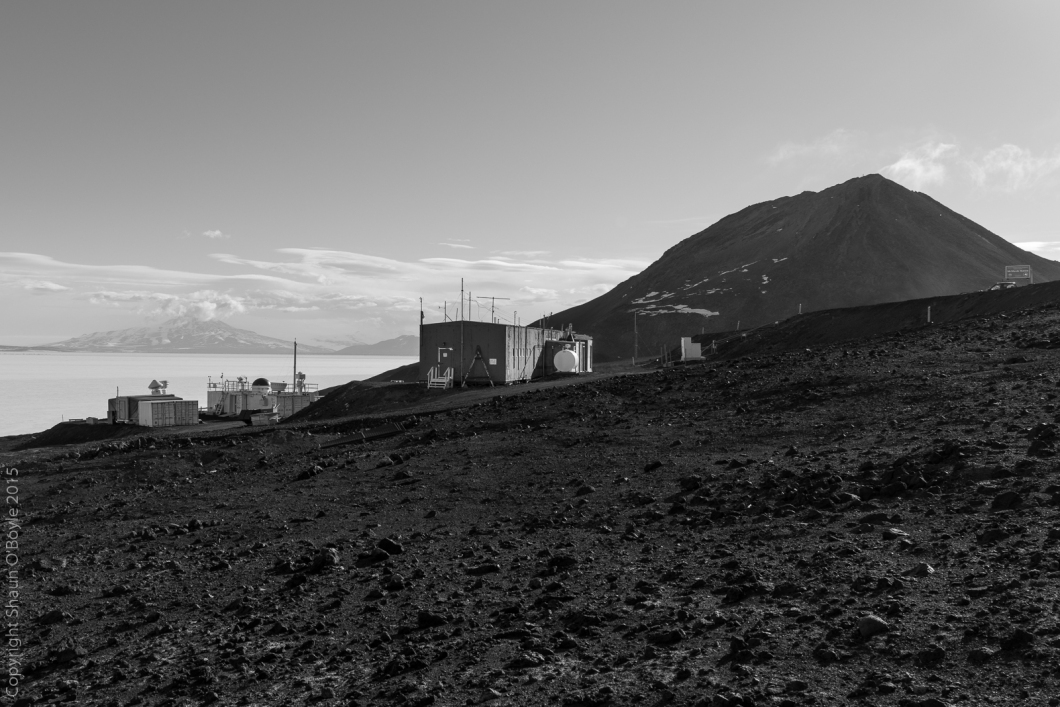More (and larger) photos of Cosray on my main website here.
The longest continuously running experiment here at McMurdo is the Cosmic Ray Observatory, Cosray, which has been studying low-energy cosmic rays since 1960. It detects secondary sub-atomic neutral particles, neutrons, produced when the original cosmic ray hits the Earth’s atmosphere. It’s one of a dozen sites around the world, part of the neutron monitoring network called Spaceship Earth. Scientist use the measurement to study how changing stellar magnetic fields, in this case on our sun, accelerate particles to make the energetic cosmic rays. One of the three Cosray neutron monitor stations at McMurdo was taken down in the 2014-15 season, and reinstalled at the Korean base Jang Bogo in December, 2015. The other two stations will be removed in the 2016-17 season and installed at Jang Bogo in the 2017-18 season. We visited the Cosray building just before construction started nearby for a short term atmospheric project to measure cloud cover, AWARE.
Thanks to James Madsen, Professor and Chair of the Physics Department at the University of Wisconsin – River Falls, for the corrected text in this post.













[…] I’m guessing that it’s an early 1960’s building, and is very similar to the CosRay building which houses the oldest continuously running experiment at McMurdo. For some reason Building 137 […]
LikeLike
[…] I’m guessing that it’s an early 1960’s building, and is very similar to the CosRay building which houses the oldest continuously running experiment at McMurdo. For some reason Building 137 […]
LikeLike